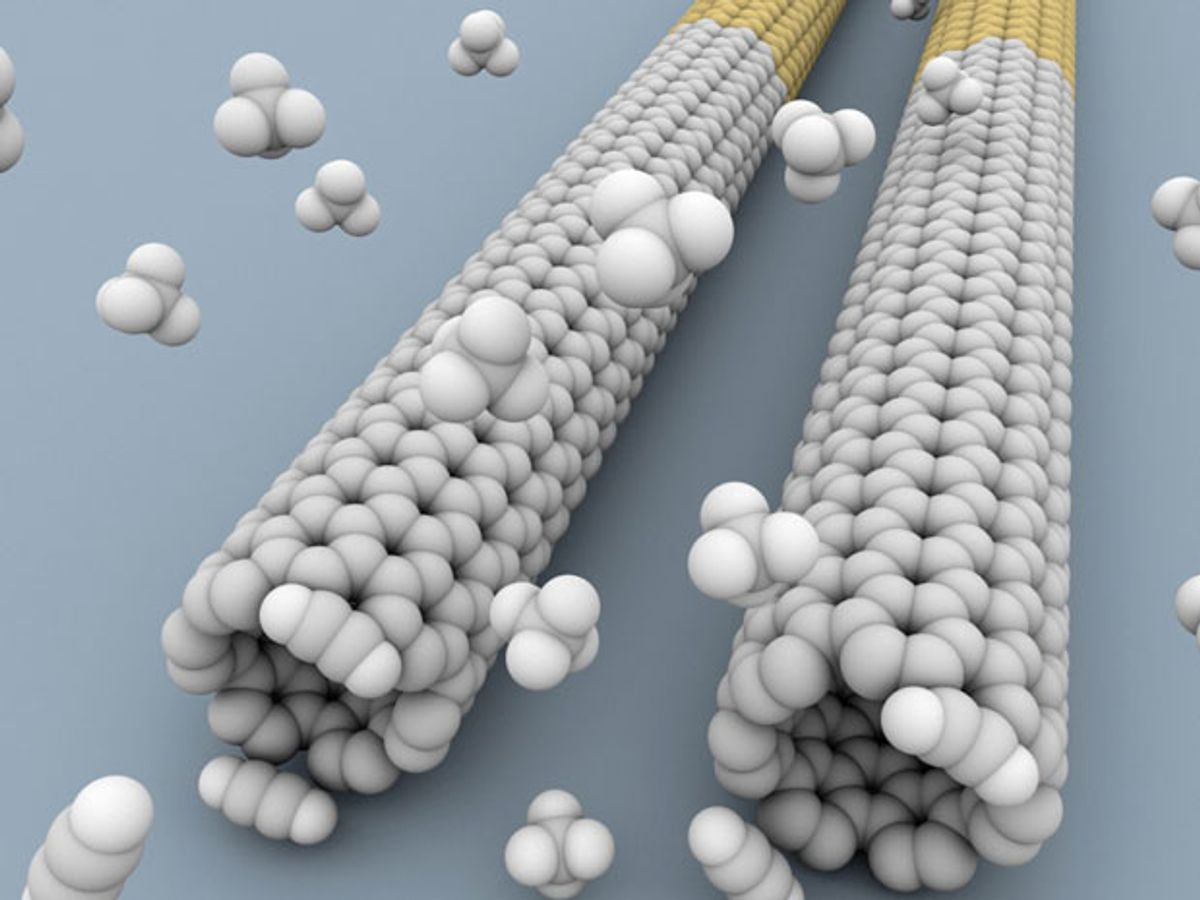Back before graphene became the favored child of the nanomaterial family, carbon nanotubes held the mantle of the “wonder material” that would replace silicon. But a succession of problems with applying carbon nanotubes to electronics led to it losing favor.
Putting them where you wanted them and connecting them was exceedingly difficult. But a perhaps more stubborn obstacle has been the difficulty of controlling their purity and quality. While all sorts of ingenious methods have been developed over the years for working around these problems, just accepting that we could never produce a set of pure carbon nanotubes and proceeding from there didn’t seem to be a satisfactory solution.
Now researchers at the University of Southern California (USC) claim to have developed a method for producing carbon nanotubes with specific and predictable atomic structures.
“We are solving a fundamental problem of the carbon nanotube,” Chongwu Zhou, a USC professor and corresponding author of the paper, said in a press release. “To be able to control the atomic structure, or chirality, of nanotubes has basically been our dream.”
The researchers, who published their work in the journal Nano Letters (“Chirality-Dependent Vapor-Phase Epitaxial Growth and Termination of Single-Wall Carbon Nanotubes”), found that if they used chirality-pure, short carbon nanotubes as “seeds,” they could essentially clone duplicates using vapor-phase epitaxial growth.
The group actually developed this growth technique last year; the latest wrinkle reported in the paper is a set of recipes for building carbon nanotubes with specific atomic structures. And having a recipe means at least one thing: the process can be repeated if you follow the instructions.
“We identify the mechanisms required for mass amplification of nanotubes,” said co-lead author Jia Liu in a press release.
Bilu Liu, another of the authors, added: “Previously it was very difficult to control the chirality, or atomic structure, of nanotubes, particularly when using metal nanoparticles. The structures may look quite similar, but the properties are very different. In this paper we decode the atomic structure of nanotubes and show how to control precisely that atomic structure.”
Zhou says that the next step will be to scale up the process. He adds in the release: “Our method can revolutionize the field and significantly push forward the real applications of nanotube in many fields.”
Whether this new development can bring carbon nanotube research back into favor for electronic applications, after years of focus and attention being lavished on graphene, remains to be seen. Working in carbon nanotubes' favor—that is, if this work can be scaled up—is the fact that researchers looking to endow electronics with graphene's amazing characteristics are not having such an easy time of it .
Image: Chongwu Zhou and Jia Liu
Dexter Johnson is a contributing editor at IEEE Spectrum, with a focus on nanotechnology.



